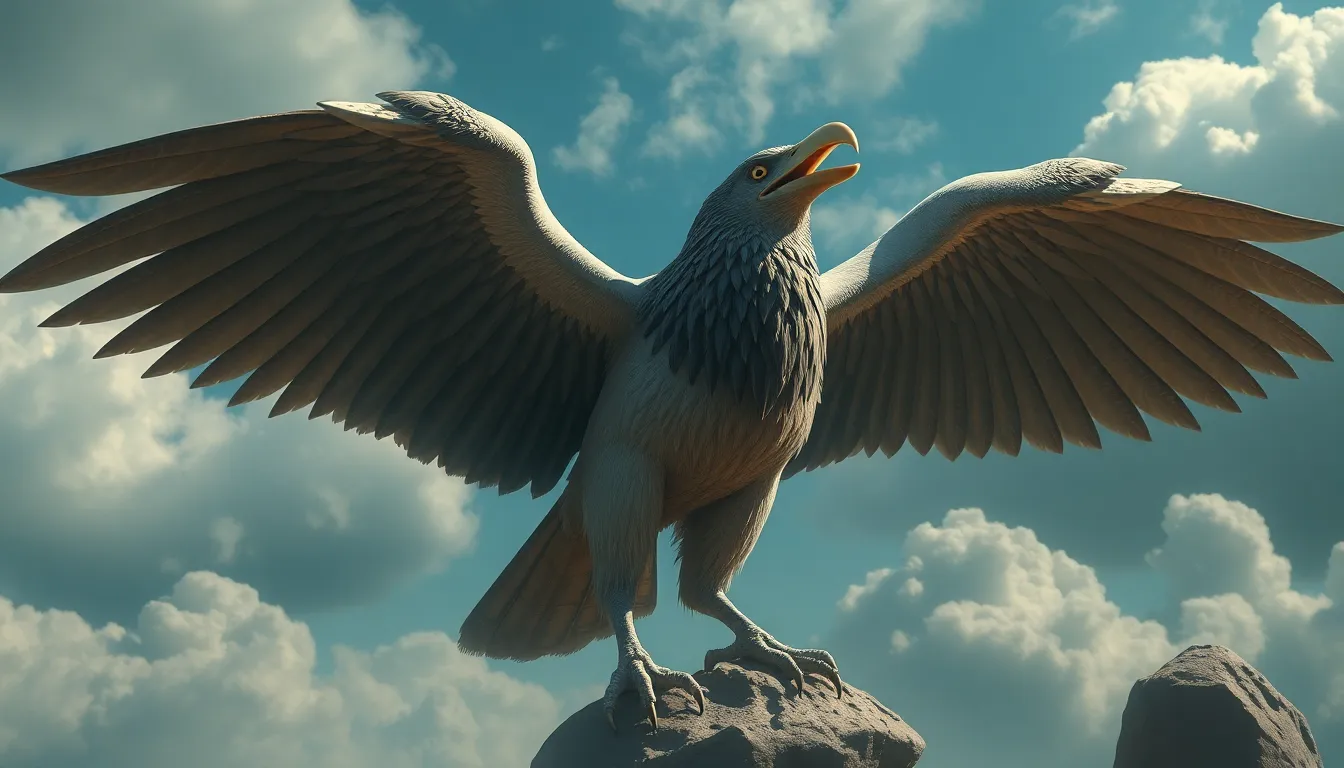The Banshee’s Warning: Foretelling Death in Irish Mythology
I. Introduction to the Banshee
The term “banshee” originates from the Irish word “bean sídhe,” which translates to “woman of the fairy mound.” This ethereal figure has captivated the imaginations of many through generations as a harbinger of death. In Irish folklore, the Banshee is often portrayed as a supernatural being who foretells the passing of a family member, serving as both a warning and a lament for the impending loss.
Throughout Irish culture, the Banshee holds a significant role in folklore, embodying themes of mortality, grief, and connection to the spirit world. Her presence is deeply woven into the fabric of Irish identity, reflecting a complex relationship with death and the afterlife.
II. Historical Context of Banshee Legends
The roots of Banshee mythology can be traced back to ancient Ireland, where the concept of the supernatural was intertwined with everyday life. The Banshee is believed to have evolved from earlier mythological figures, such as the “Morrígan,” a goddess associated with war and fate. Historically, Banshees were considered to be the spirits of women who had died in childbirth or violent circumstances, forever mourning their own untimely deaths.
This mythology is closely connected to Celtic spirituality, which emphasized the cyclical nature of life and death. The Celts believed in an afterlife where the souls of the deceased could interact with the living. The Banshee’s role as a messenger of death highlights the cultural significance placed on honoring the dead and recognizing the sadness that accompanies loss.
III. The Banshee’s Appearance and Characteristics
Common descriptions of the Banshee vary, but there are several recurring themes in her portrayal:
- Long, flowing hair, often described as white or silver
- A pale complexion, sometimes appearing ghostly or ethereal
- A flowing white or grey dress, reminiscent of the traditional attire of Irish women
- Eyes that may be red from weeping, symbolizing her sorrow
Interestingly, variations in appearance can be found across different regions of Ireland. For instance:
- In some areas, she is depicted as a young maiden, embodying beauty and grace.
- In others, she appears as an older woman, reflecting wisdom and the weight of her sorrow.
- Some legends even describe her as a hag, emphasizing her connection to death and decay.
IV. The Banshee’s Cry: A Harbinger of Death
The Banshee’s wail is perhaps her most defining characteristic. This mournful cry is said to signal the impending death of a family member, and its significance cannot be understated. The wail is often described as a piercing, haunting sound that resonates with deep grief and sorrow.
Cultural interpretations of the Banshee’s cry vary, but it is generally seen as a profound warning. In many Irish families, hearing the cry is seen as an omen, and it is often recounted in tales passed down through generations. The implications of this cry are multifaceted:
- It serves as a reminder of mortality and the inevitability of death.
- It fosters a connection between the living and the deceased, emphasizing the importance of remembering loved ones.
- It evokes a sense of communal mourning, as families unite in their grief.
V. Banshees and Their Connection to Families
In Irish folklore, Banshees are often linked to specific families or clans. The concept of familial Banshees suggests that certain families have their own spirit who watches over them and warns them of impending death. This connection fosters a sense of identity and continuity within families.
Stories abound of Banshees associated with notable Irish clans, such as:
- The O’Neills, who were said to have a Banshee that would wail for the death of their chieftains.
- The O’Briens, who had a Banshee known for her beautiful singing, echoing the family’s noble lineage.
- The Kavanaghs, whose Banshee was believed to appear at the time of a family member’s death, clad in a white dress.
These stories serve to reinforce the importance of lineage and heritage in Irish culture, as families seek to honor their Banshees and the legacies they represent.
VI. Banshee Folklore in Literature and Popular Culture
The Banshee has found a prominent place in Irish literature, often symbolizing loss and the passage of time. Writers have utilized her character to explore themes of grief and death, making her an enduring figure in Irish storytelling.
Some notable representations of Banshees in literature include:
- James Joyce’s “The Dead,” where the idea of mourning and remembrance is intricately woven into the narrative.
- W.B. Yeats’s poetry, which often draws upon Irish folklore, including references to the Banshee.
- Modern novels that incorporate the Banshee as a character, blending traditional mythology with contemporary themes.
In popular culture, the Banshee’s influence extends beyond literature into film, television, and video games. She is often depicted as a ghostly figure, embodying the fear and tragedy associated with death. Her character has been used in various genres, from horror to fantasy, ensuring her place in the modern imagination.
VII. Modern Perspectives on the Banshee Myth
Despite the passage of time, Banshee legends remain relevant in contemporary Irish culture. Many people still share stories of encounters with Banshees, viewing them as a connection to their ancestry and cultural heritage. The Banshee serves as a reminder of the grief and loss that are intrinsic to the human experience.
Furthermore, the Banshee has evolved into a symbol of grief, embodying the sorrow that accompanies the loss of loved ones. In modern contexts, she represents the importance of mourning and honoring those who have passed away, allowing individuals to express their feelings of loss in a culturally significant way.
VIII. Conclusion: The Enduring Legacy of the Banshee
In summary, the Banshee holds a vital place in Irish mythology, serving as a powerful symbol of death and mourning. Her role as a foretelling spirit resonates through generations, reflecting the complex emotional landscape associated with loss. The Banshee not only warns of death but also fosters connections between the living and the deceased, allowing families to honor their heritage.
As we reflect on the ongoing fascination with the Banshee in popular culture, it is clear that her legacy endures. Whether through literature, film, or personal stories, the Banshee continues to evoke deep emotions and provoke thought about mortality, grief, and the bonds that tie us to those who have gone before us.



